Data and information collecting isn't the most glamorous subject; however, with the influx of iPads into my school setting, and the increasing popularity of Google spreadsheets and forms, data collection has become a hot topic among the SLPs in our school system!
Several of us have embraced using Google forms and spreadsheets to make our data collecting lives border on fun. Before Google, my folders for kids were full of sticky notes, therapy data forms, attendance forms, and other assorted loose items. Now, progress report time is cleaner and more data oriented, because much of what I need has been systematically collected by Google forms into the spreadsheets. (There is a spreadsheet for every form.)
This is a brief description of various ways I currently use the forms and spreadsheets in practice. A tutorial link for creating your own Google forms is provided at the end.
1.
Recording data and notes from a therapy session with a student.
There is still a spot for sticky notes, and recording tallies on paper to achieve percentages, but most often, the main part of my sessions with students is recorded on a Google Form.
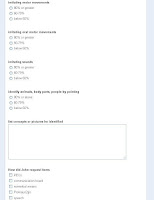 |
| portion of a form |
For each of my students, I have created a Google form based on the student's IEP goals and objectives. At the end of the session, I can quickly fill out the form (either on the iPad, or on the computer) recording notes and data instantly.
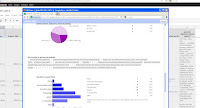 |
| summary of responses screenshot |
The data entered on the form is compiled by Google Docs in to a spreadsheet, and a summary of responses can also be done through Google.
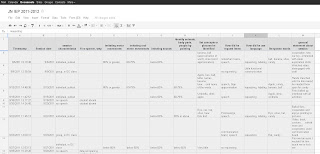 |
| sample spreadsheet of student data |
2.
Taking Daily Attendance
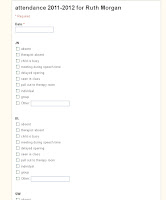 |
| Portion of my daily attendance form |
We all know in the school setting why it's important to keep track of how many times a speech student was seen per reporting period, and why sessions were missed. I used to keep attendance on paper, then progressed to an Excel spreadsheet. Lately, I've been taking attendance on a daily Google form which sends all of the information into a spreadsheet stored in Google Docs. It's very manageable!
3.
Recording and Sharing Hearing Screening Results
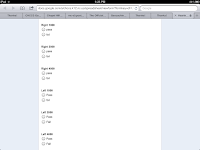
This is an area that came to me one day when I was scratching out hearing screening information on a piece of paper. A year ago, a group of us in the school began typing into a shared document all of our screening information. I've since developed a Google Form that I can use while I'm screening a child. I usually have an iPad at my side as I'm screening with this form on the screen. (I just tap the results in as I go). The results are instantly sent to the shared Google Doc---no need for a pencil!
4.
CFY Supervision
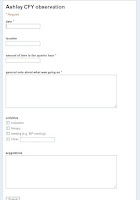
This year, I've had the opportunity to supervise a wonderful new Clinical Fellow. I know that she will sail through this year with flying colors, but to be fair to her, and to adequately do my job as her supervisor, I have to observe for an allotted amount of time, and monitor her activities as prescribed by both the North Carolina State Board of Examiners, and by ASHA. I've created a Google Form for observations, which throws all of my observation data into a spreadsheet which I've shared with her online. This transparent online record-keeping has been helpful for both of us!
5.
Weekly written feedback to a graduate intern
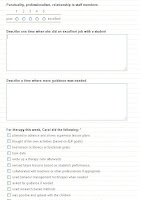 |
| Part of the form |
I am fortunate in that I work at an elementary school close to a major university that has a top-notch graduate program, so I usually supervise two students during the course of a year. We have been asked to provide weekly written feedback which is extra work to my paperwork mountain---except that I created a Google form for providing such feedback. My grad student and I filled it out together every Friday last year, and all of the data was collected in a shared spreadsheet. The forms are nice in that they clearly defined expectations, and also allowed for some anecdotal feedback. At the end was a section for the two of us to write a short term goal for the coming week.
Nothing will totally replace all note-taking, and there is a place for hand-written data still in my office. These are just a few ways I have used technology to make my life run a bit more efficiently. I have loved the 'sharing' aspect of Google Docs---so for example, if several adults are working on the same goals for a student, they all can send their data using the same shared form to the shared spreadsheet.
For a tutorial on creating your own forms,
go to this page.
I'm sure there are countless other ways to use these in a speech therapy setting and that we (as a profession) are only at the beginning of using technology more effectively in our practice. Comment if you have ideas for further uses for Google forms in speech therapy, or would like to see a specific Google form topic addressed.
















































